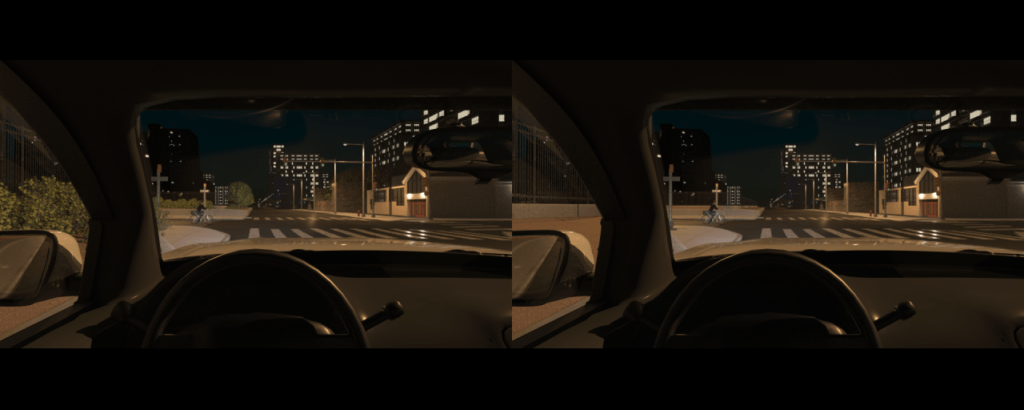In the early hours of the morning, a vehicle traveling westbound above the posted speed limit proceeded through a green light and collided with a cyclist. The driver of the vehicle testified that they did not apply their brakes until the last few seconds before impact because the landscaping adjacent to the intersection had blocked their view of the approaching cyclist. Surveillance video of the incident showed that the driver entered the intersection with a green light and that there was a red light for the cyclist.
An ARCCA expert was asked to examine if the landscaping adjacent to the intersection would have created an obstruction for the driver and the cyclist, and then to create an animation that demonstrated the incident and the expert’s opinions.
Steps Taken:
- Reviewed the available file materials including the police report, photographs, surveillance video and statements from involved parties and witnesses;
- Inspected the incident site, documenting it with photographs, measurements, and three-dimensional laser scans. Conducted drive-through tests at and below the posted speed limit;
- Inspected, measured, and scanned an exemplar vehicle; and
- Utilized frame-by-frame analysis of the available surveillance footage, data from the site inspection, geometric specifications of an exemplar vehicle, and photogrammetric analyses to determine the locations of the vehicle and the cyclist and their average speeds leading up to the incident.
- The Visuals and Animations team created:
- A 3D reconstruction of the incident site using site scans from inspections, surveillance video, historical aerial imagery, and city planning documentation;
- 3D models of the subject vehicle, bicycle, and the cyclist using scans of an exemplar vehicle, medical records, photographs, and other file materials; and
- Additional lighting effects were added in post-production to the animation to provide a better representation of the nighttime conditions.
Final Findings:
A sightline analysis of the incident site and historical imagery indicated a concrete barrier structure adjacent to the area of impact contained landscaping that the driver claimed to have obstructed their view. These concrete barriers, excluding the landscaping, would have obstructed the visibility of any object below 54” in height. While approaching the intersection, the cyclist’s bicycle and a majority of their body would have been obstructed by the concrete structure from the westbound lane of travel. The driver in the westbound lane of travel would not have been able to detect the cyclist traveling northbound until 1.3 seconds before impact.

3D representation of Driver’s POV with and without landscaping
Based on human factors literature, this would not have been enough time for the driver to perceive, react, and avoid the cyclist. Additionally, ARCCA experts performed parametric time-distance calculations to determine if the collision would have occurred if the driver had been traveling at the posted speed limit. At 35 mph, as opposed to the actual 60 mph speed at the time of the incident, the vehicle and the cyclist would not have collided.
ARCCA’s expert determined that the presence or absence of the landscaping at the corner of the intersection would not have changed the outcome of the incident. To help demonstrate this opinion, the ARCCA visuals and animation team created an animation that depicted the incident and other scenarios, such as a lack of landscaping, the cyclist turning their gaze, and changes in vehicle speed.
